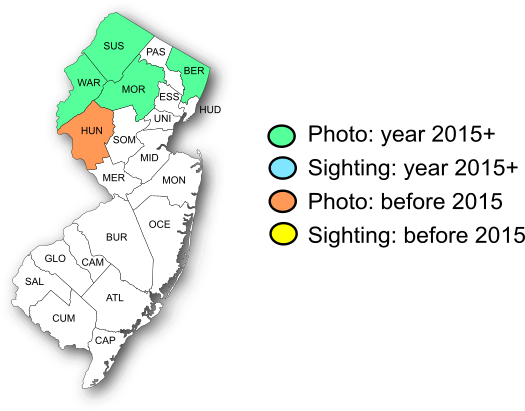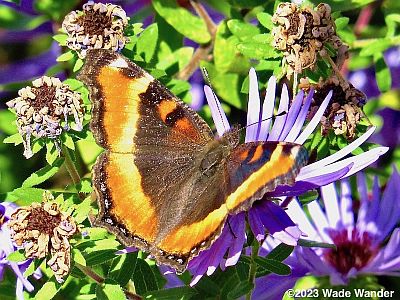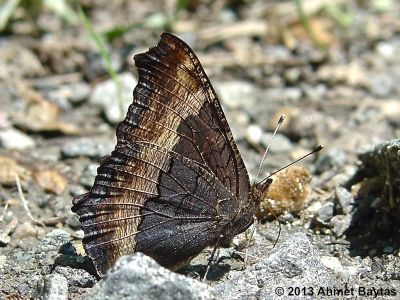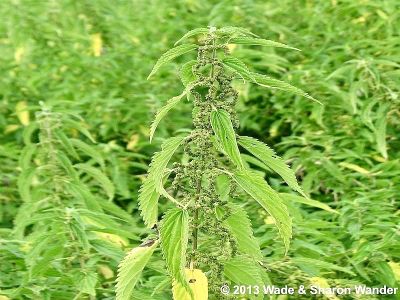New Jersey Butterfly Club
A chapter of the North American Butterfly Association (NABA)
Milbert's Tortoiseshell
Nymphalis milberti
Identification: Small—1.8" (much smaller than Compton’s Tortoiseshell). Above: FW and HW dark brown but with a brilliant yellow and burnt orange "sunburst" band near margin of both wings. Unmistakable and unforgettable. Below: FW and HW two-toned—basal area finely striated dark brown, outer portion paler and also finely striated, with a narrow blue line paralleling the irregular wing edges. Less mottled-looking below than Compton Tortoiseshell.
NJ Status and Distribution: Sporadic resident. Primarily a northern species that is of very irregular occurrence in NJ. Apart from (extremely rarely) establishing temporary colonies, a few Milbert’s individuals occasionally stray south in the fall. The last big residency began quietly in 2001 and persisted to 2008, and a significant fall incursion occurred in October 2017, mainly in Sussex County.

Habitat: Flowery meadows and wetland fields with the host plant. Often seen on bare ground like Compton, anglewings, and Mourning Cloak. Short-lived colonies establish in wetland areas with the food plant.
Flight Period: Overwintering adults begin flying by the end of April. Their offspring emerge in July and fly into November. During outbreaks most often reported in April into May; July; and September/October.
Caterpillar Food Plants: Nettles in the genus Urtica.
Overwintering Stage: Adult.
Good Locations: During the last outbreak was most common in the Delaware Water Gap NRA and the Wallkill River NWR.
Comments: Because the food plant is always common and widespread in NJ, it is a mystery why colonies disappear after a few years.



